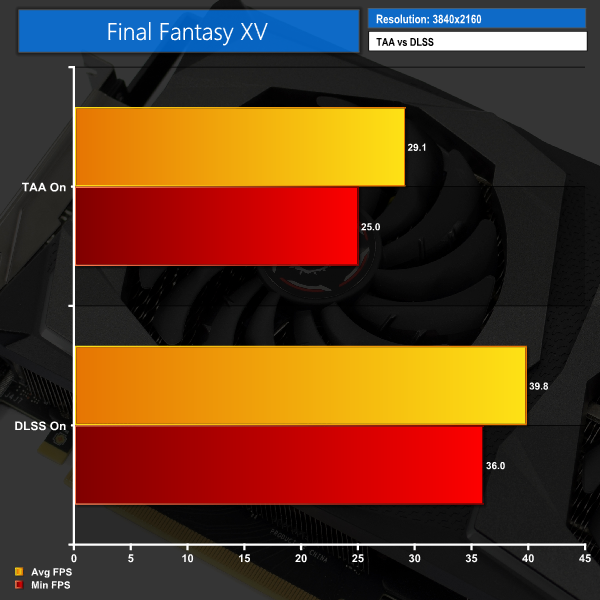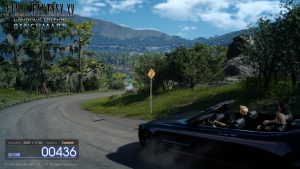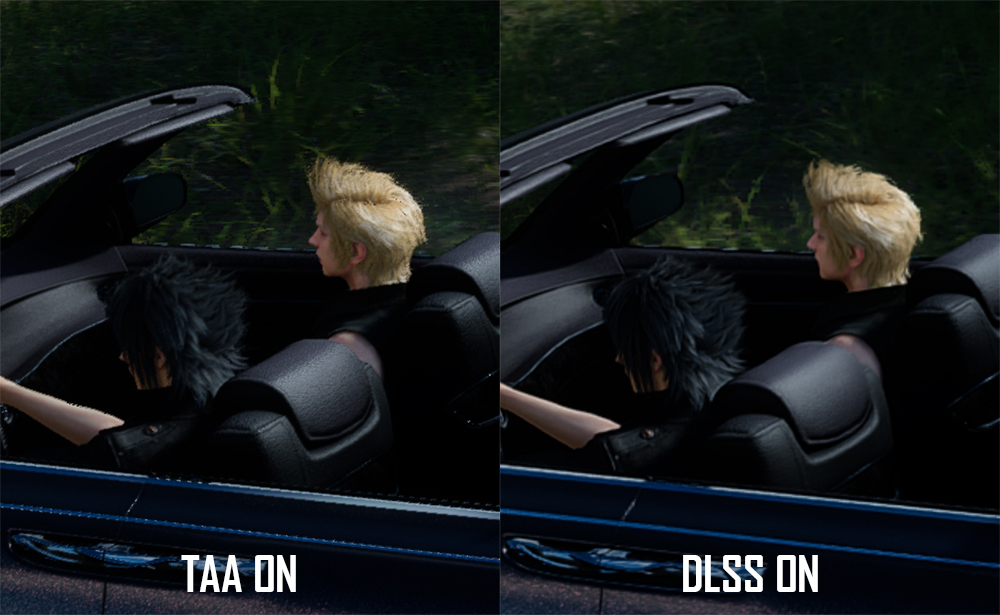We are in a similar situation with Deep Learning Super Sampling (DLSS) that we are with ray tracing – no game on the market currently supports it, though that should hopefully change soon. It is a Turing-specific feature, though, so it won’t be available to those with Pascal (or older) GPUs.
Nvidia supplied another demo for the purposes of this review – this time from Final Fantasy XV. We were able to run the demo at 4K with both TAA and DLSS anti aliasing solutions. We used FRAPS to extract minimum and average FPS figures, after a 1-minute run.
DLSS certainly helps performance with Turing GPUs – we can see the average frame rate rose by 36.7% when running TAA vs DLSS on the MSI Gaming Z RTX 2070. The minimum frame rate rose by a full 44%.
So, that’s the performance from the demo, what about visual fidelity?
TAA on, left, versus DLSS on, right
The above screenshots were taken directly from the FFXV demo running DLSS vs TAA. On the left we have the demo running 4K TAA on, and on the right the demo is at 4K with DLSS on instead. From this big-picture view, it may not look like there is much between the two.
When we really crop in close, however, I think the difference is clear to see. TAA has noticeably more ‘jaggies’, while there are also some artifacts around the blonde hair. DLSS does look overall a bit softer, but it is noticeably smoother and overall a better-looking image.
I look forward to testing this further in a real-world in-game environment. This demo certainly paints a promising picture, and we expect Shadow of the Tomb Raider to be the first mainstream game to implement DLSS – but for now, this demo will have to do.
 KitGuru KitGuru.net – Tech News | Hardware News | Hardware Reviews | IOS | Mobile | Gaming | Graphics Cards
KitGuru KitGuru.net – Tech News | Hardware News | Hardware Reviews | IOS | Mobile | Gaming | Graphics Cards






